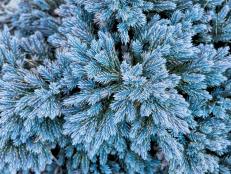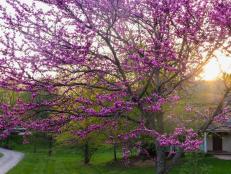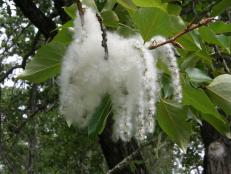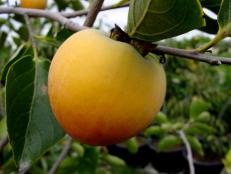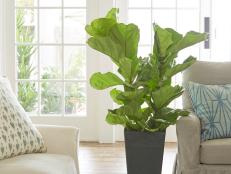Southern Favorite Moves North

Crape myrtles are belles of the South in late summer. They can be the only tree or shrub blooming during the southern summer's brutally hot dog days. But these days the belles have given way to mini myrtles that retain the same killer color but, even at maturity, grow only into pint-size plants.

No longer strictly a 30-foot tree, new cultivars have yielded shrubs that bloom just as big. Now you can inject color at summer's end no matter how small the space.

Crape myrtle genus, Lagerstroemia, contains 35 species from Asia and the Pacific, but only three of them are cold hardy. The species L. indica was brought to South Carolina in the late 18th century. The plants became hugely popular and were distributed far and wide. The only problem was their susceptibility to mildew late in the summer.

The US National Arboretum later became a leader in crape myrtle breeding and testing. Their breeders tackled the problem in the 1950s by crossing it with the second of the hardy species, the rare L. fauriei. This resulted in a group of trees and shrubs with a wider color range, improved mildew resistance and greater cold hardiness.
The arboretum's 29 cultivars are all easy to recognize in garden centers by their names. Each is named for a Native American tribe, such as red 'Cherokee' or clear pink 'Osage.' Check each plant out carefully because they range considerably in size from full trees at 10 to 30 feet to more modest shrubs. Outstanding shrub-size varieties that mature at five to 10 feet include 'Caddo' and creamy 'Tonto'.
The newest trend in crape myrtles is mini myrtles. These are small shrubs, even groundcover-size plants that are smaller than three feet, opening the door for entirely new applications.
The arboretum recently introduced two mini reds: 'Chickasaw' and 'Pokomoke'. Slow growing, they can be as low as 20 inches tall and spread to just under three feet wide within eight years. This is a great spreading form that adapts very well to pots and hanging baskets. They also can be used en masse as groundcover.
Monrovia Nursery Company also has produced a line of smaller myrtles. Theirs are labeled 'Petite' with shrubs averaging a convenient five feet or less, which is widely adaptable. Despite this small stature they produce an abundance of full-size flower clusters for a fabulous late-season display. 'Petite Plum' offers a rich magenta blossom. Others include petite Orchid, Red Imp, Pinkie, Snow and Embers.
Crape myrtles are incredibly rugged plants that require little to no pruning. In some areas the practice of heading them back has spoiled many beautiful trees. Heading back and hard pruning only generates a lot of bushy foliage growth that does little for the beauty of the plant. Allow yours to grow naturally with an occasional light shaping for better form. They will perform carefree for many years to come.
Myrtles bloom on the current season's wood. That means the branches that develop in spring and summer will be the ones that flower. The only cutting is to clip the stems of the flowers after they have ceased blooming to prevent seed production. It also improves their looks for brilliant foliage color in the late fall.
Mini and midsize myrtles are a great way to brighten up beds and borders at a time of year when many plants have ceased blooming. There are many other small cultivars on the market, but few are so rigorously tested than these. You are assured that their varieties will grow vigorously, live long and bloom abundantly for many dog days to come.
For further information, go to www.usna.usa.gov and www.monrovia.com.
(Maureen Gilmer is a horticulturist and host of Weekend Gardening on DIY-Do It Yourself Network. E-mail her at mo@moplants.com. For more information, visit: www.moplants.com or www.DIYNetwork.com. Distributed by Scripps Howard News Service.)







